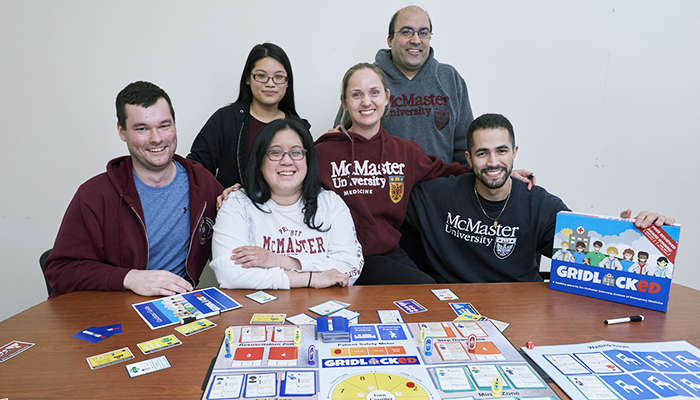McMaster faculty and students create emergency medicine board game

GridlockED, is an educational tool to help future doctors and doctors training to be specialists in emergency medicine learn system approaches to multi-patient management in a safe, low-stakes environment.
McMaster University emergency medicine faculty and medical students have designed a unique new board game.
The game, called GridlockED, is an educational tool to help future doctors and doctors training to be specialists in emergency medicine learn system approaches to multi-patient management in a safe, low-stakes environment.
“A lot of learning happens by doing, but other opportunities like simulations take a tremendous amount of resources,” said Teresa Chan, co-creator of the game and an assistant professor of medicine at McMaster’s Michael G. DeGroote School of Medicine. “We wanted to find another way to teach what happens in the emergency department in a fun, approachable manner.”
In GridlockED, players work together to treat and prioritize patients with a variety of medical conditions. The goal is to take care of as many patients as possible, manage an eight-hour shift and maximize points. The game will be available soon.
Additional faculty on the project included Matthew Mercuri and Alim Pardhan, both assistant professors of medicine at McMaster.
“It is our hope this game will be a tool to help us teach the management of the emergency department to our learners, whether they are students or residents,” said Pardhan, who is also the program director of the Royal College emergency medicine program.
Key students involved in the initiative hail from the Niagara Regional Campus of McMaster’s Michael G. DeGroote School of Medicine. They include Josh Rempel, Daniel Tsoy and Paula Sneath. They also had help from other students, including Rebecca Dang from McMaster, Simon Huang from the University of Saskatchewan and Eric Jeong from Western University.
Sneath is a third-year medical student at McMaster who will start her emergency medicine residency at her alma mater in July. She was recruited by Chan to help develop the game, which started off as an idea jotted down on a piece of paper at a coffee shop.
She said helping to develop the project with her McMaster colleagues was a unique and rewarding experience.
“The best part has been the opportunity to work with such a supportive, talented and hardworking team,” Sneath said. “The time I’ve spent with them playing and refining GridlockED, travelling across Canada to share it with other emergency medicine groups, and collaborating on posters, presentations, and manuscripts, has most definitely been the most enriching aspect of this project.”
All of the proceeds from sales of the game will support research initiatives in emergency medicine at McMaster.
“It is a fundraising initiative, which makes it easy to support,” said Chan, who is also an emergency room doctor with Hamilton Health Sciences. “We will determine how to best administer the proceeds in the fund, and there are already people in our department who say they want to design other games.”
Chan said there has been a lot of interest in the game leading up to its sale launch.
Besides being used by health professionals, she said it could be used to foster more knowledge in communities about how the emergency department at their local hospital functions.
“I think we’re also looking for people to understand the emergency department better, to understand what is a code blue, why backlogs happen and the job that we do,” she said. “It has tremendous potential as a way to reach people as a communication tool.”
GridlockED is rated 18+ due to its medical scenarios, but Chan said based on interest, a version that is suitable for younger players may be developed down the road.
GridlockED is priced at US$89.99 plus shipping and is tentatively set to be available for purchase on March 27 online at www.gridlockedgame.com.
News Article